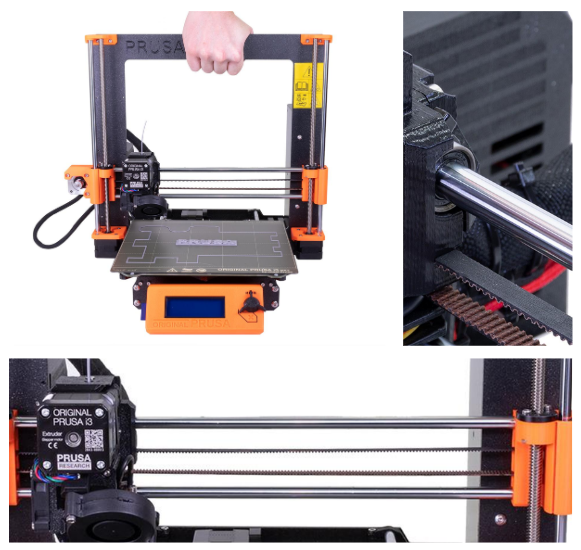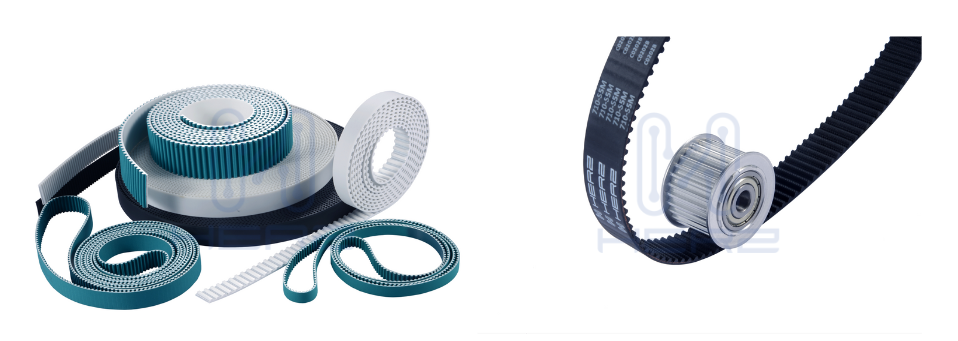The Main Role Of Synchronous Belts In 3D Printers
| In the 3D printing industry, synchronous belts play a crucial role as a key transmission component. Their primary purpose includes driving precise movements of the print head and the build platform, ensuring accuracy in motion and positioning during the printing process. In complex printing tasks, synchronous belts undertake the critical responsibility of precisely controlling the movement of the print head along the X, Y, and Z axes. This precise drive ensures the accuracy of geometric shapes and details in printed objects. Additionally, synchronous belts drive the build platform, ensuring that printing materials are stacked with exact layer thicknesses as planned, resulting in the formation of complete printed objects. Their highly reliable transmission performance and stable operational characteristics effectively reduce vibrations and errors that may occur during printing, ensuring precise alignment and consistency between each layer. Below are detailed applications of synchronous belts in driving precise movements of the print head and the build platform: 1. Function and Role - Precise Driving: In 3D printers, synchronous belts ensure the print head moves and positions with extremely high precision during the printing process through their accurate transmission mechanism. This precise driving extends beyond simple linear movements to include complex path planning and multi-axis control, such as simultaneous movement along the X, Y, and Z axes. The design and craftsmanship of synchronous belts must precisely control each movement step to ensure the integrity and consistency of printed objects in terms of shape, size, and surface detail. This level of precision is achieved through the highly engineered manufacturing and rigorous quality control of synchronous belts, ensuring that every printing task meets expected high standards. |  |
- Stability of Printing Paths: To ensure smooth printing processes and achieve high-quality final prints, the movement path of the print head must remain extremely stable. Any vibration or slight deviation can result in surface unevenness or shape distortion of printed objects, potentially leading to printing failures. Synchronous belts effectively reduce the occurrence of these potential issues through their highly reliable transmission performance. Their optimized design and material selection resist inertial forces and external disturbances during movement, maintaining stability and accuracy of the print head throughout its motion. This stability not only enhances printing consistency and precision but also significantly reduces production costs and time losses caused by unstable motion.
2. Precise Control of the Build Platform
- Layer-by-Layer Stacking: Throughout the entire printing process, the movement of the build platform must remain extremely smooth and precise to ensure alignment and consistency between each layer. Synchronous belts manage the movement of the build platform effectively with their stable transmission performance and high precision control, minimizing displacement or poor movement between layers. This precision not only affects the surface smoothness and clarity of details of printed objects but also directly impacts the overall structural strength and stability of the printed object. While ensuring inter-layer accuracy, synchronous belts also enhance efficiency and stability during the printing process, providing users with consistent and high-quality print results.
- Inter-Layer Accuracy: With continuous advancements in 3D printing technology and the expansion of application areas, the demand for precise control of the build platform will continue to grow. In the future, synchronous belts may integrate more advanced automated control systems to enable real-time monitoring and adjustment of the build platform's movements, further improving the accuracy and efficiency of the printing process. Additionally, the application of new materials and advancements in manufacturing processes will bring new breakthroughs in the design and performance of synchronous belts, enabling them to handle more complex and larger-scale printing tasks, expanding the boundaries of 3D printing technology. These technological advancements will further drive the progress of the 3D printing industry, bringing more innovations and benefits to manufacturing.

3. Expansion of Applications in 3D Printing Technology - Diversified Applications:
The application scenarios of 3D printing technology continue to expand, leading to diverse and customized demands for synchronous belts. For instance, specific industries such as healthcare, aerospace, and automotive manufacturing require synchronous belts with particular specifications for dimensions, chemical resistance, and high-temperature performance. These demands drive the diversified and customized development of products.
| Environmental Friendliness and Sustainable Development: With increasing concern over environmental impact, the 3D printing industry is also seeking more eco-friendly solutions. The application of new materials in synchronous belts and the design concept of recyclability have significantly progressed in reducing resource consumption and extending service life. HERZ's synchronous belts provide corresponding technological references from material production to customer selection methods, ensuring compatibility with different equipment while maintaining product quality. This contributes significantly to promoting sustainable development in the transmission industry. |  |

